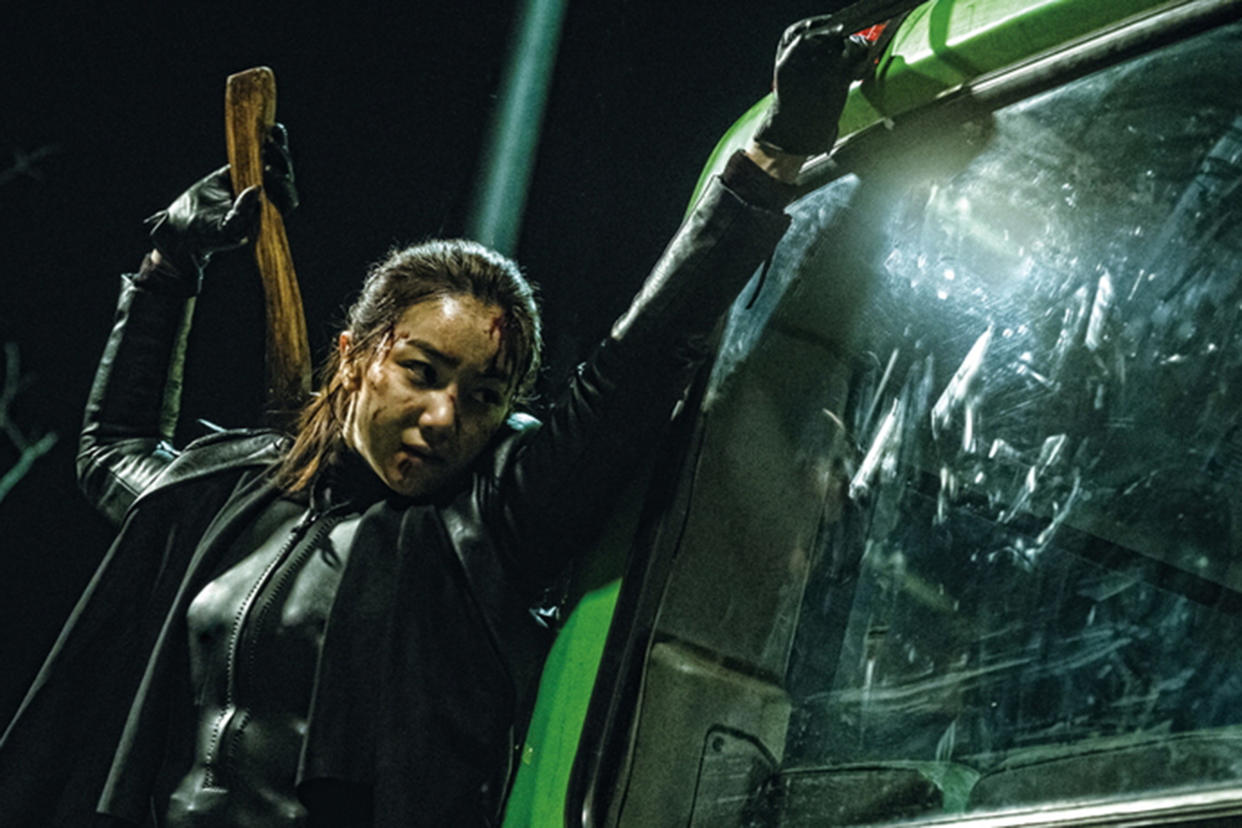The Villainess is a loopy, bloody trip: EW review

The Villainess kicks off with a six-minute symphony of pure action-film invention. You’re looking, first-person, through the eyes of an unseen megabadass – the kind of relentless slicing/punching/shooting/jump-sliding killer that can lay magnificent waste to a whole bad-dude mob. The camera moves through a corridor, a stairway, a window, a meth lab. There are guns, knives, blood spraying every direction. For connoisseurs, it’s an Oldboy plus an Atomic Blonde plus the only good action scene from Daredevil, but there are some genuinely unexpected moments. When it seems like things can’t possibly get any crazier, a door opens – and there are a couple dozen more bad guys, in a gym!
One of the bad dudes physically grabs the killer/you, bashing the camera against the wall-length mirror. This is your first sight of Sook-hee (Kim Ok-bin), the titular villainess. There’s a shift away from first-person perspective after that. (Thank goodness: The last thing this world needs is another Hardcore Henry.) But the setpieces in The Villainess never lose that initial vibrant you-are-there dexterity. Director Jung Byung-gil was a stuntman, just like John Wick directors Chad Stahelski and David Leitch, and like them Jung has a meticulous fascination with the movement of bodies onscreen. The cuts in The Villainess are frequent, often hidden in whip-pan camera movements, but there’s an unchaotic grace in how Jung follows Sook-hee’s every feat of athletic fatality.
And there are some solid setpieces, involving great heights and moving vehicles. (This is the kind of movie where every motorcycle has a sword-scabbard). But there’s a plot, too, loopy and soap operatic. After the initial massacre, Sook-hee’s taken to a top-secret assassin school, full of tough women learning the undercover-hitman trade. Our heroine gets an offer: Work for the shady agency for ten years, and earn her freedom. One twist: She’s pregnant. Another twist: Unbeknownst to her, the agency sets her up with a handler (Sung Joon), a surveillance operative who pretends to be her cute-flirty next-door neighbor.
There’s a lot more. The story hops around in time, showing Sook-hee’s tragic backstory and her curious romantic history. The structure’s strange, and repetitive: We see Sook-hee learn how to be a criminal badass in the past, and we see her learn how to be a Bourne-level assassin in the present. Jung co-wrote the film, and I love some of his soapy flourishes; I’ve seen people assemble a sniper rifle, but I’ve never seen someone do it in a wedding dress. The director has a real skill at conducting fight scenes toward a crescendo. (If he’s not in line for the next Fast & Furious movie, they should at least consider him for Accountant 2.)
Almost all of the invention seeps away, though, when the film quiets down to focus on Sook-hee’s personal life. That’s a bummer. The material is pulpy and wild, a double-reverse Notorious, but it plays sappy and simplistic. The characters come to life when they fight, and seem half-dead when they talk. You think of how, with equivalent material, Luc Besson turned La Femme Nikita into a curiously sensitive tale of romantic transformation. Or you remember the mawkish sincerity that powered John Woo’s earliest and best work. (Like, The Killer is a great action movie, but you always got the sense that for Woo, the action was only precisely as important as the subplot about the blind singer seeking an eye transplant, that the blood mattered less than the doves.)

